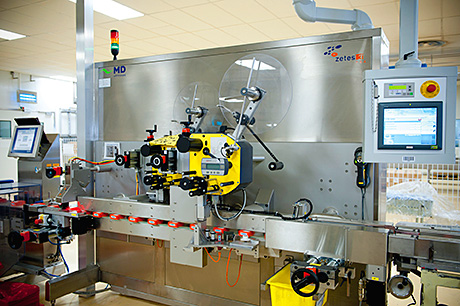Many companies are missing a trick when it comes to realising the benefits of a Packaging Execution System (PES), suggests Zetes, a supplier of supply chain, identification and mobility solutions.

THE PES is to the packaging identification process what a Manufacturing Execution System (MES) is to manufacturing: A central spoke in the wheel, guiding all actions related to this process.
But very few companies use one: 90% of manufacturing companies fail to recognise the importance of a Packaging Execution System, endangering their traceability. This is a particular omission in today’s world in which correct product identification and traceability has become a critical factor in the supply chain.
In the packaging process, a direct link with the ERP system to provide all the data for the identification of the products is necessary, and in most cases, does not exist. This means that each device involved in the packaging process is configured locally and independently, and often manually. As a result there is an increased probability of mistakes – such as the wrong information on the label, non-compliance with standards like GS1, errors against supply chain identification rules or configuration errors with respect to the packaging identification system. This means there is no visibility and traceability of actions, events and data, no data aggregation and no automated control.
“Without a Packaging Execution Suite that provides integration of all packaging lines with the ERP of the company, the whole traceability of its products is jeopardised as you cannot guarantee the accuracy and efficiency of the identification and control processes”, says Pascal Longchambon, head of the ZetesAtlas Business Solution Group
The possibility of full control over the packaging line
With these challenges in mind, Zetes says it has developed ZetesAtlas, where the software acts as the essential link between the ERP and the packaging line. By providing “a totally controlled loop”, says Zetes, it takes control over the full range of peripherals, such as printers, cameras, and controllers, allowing the correct management of all the common processes related to product identification.
“One single solution steers all the lines, controls all the data and provides reports on events and actions that show what happened and where it happened. Fully automated processes also mean faster execution of the latter,” adds Longchambon.
Furthermore, one single person can steer all the machines on the same line, with a single machine interface. This reduces the number of manual interventions, and therefore, the number of errors. “Knowing that the integration has been done thoroughly and that all the information is securely mastered in real time provides the customer with real peace of mind. Identification quality and integrity is guaranteed,” he adds.
ZetesAtlas can also handle unit identification (including heterogeneous flows and serialisation) and apparently provides precise information on which products are in which boxes, and so on. Parent-child association is made possible through mass reading: when positioning products in a box, the serial numbers of these products are read simultaneously and associated with the serial number of the box itself. Executing so-called data aggregation strengthens the traceability of each individual product unit.

The case for investing in a PES
According to Longchambon, for decades, manufacturing companies have concentrated their investment efforts around the MES, which, of course, is essential to ensure products are of consistent quality. “But with the growing need for traceability, be it to protect brands, control distribution channels or protect consumer health, we are noticing a mindshift, although, until recently, there was not really an equivalent of the MES for the packaging process.
“With the emergence of new data carriers, which allow you to encode more data (such as, for example, “best before date”) and item level identification, companies start to feel the need for a solution that lets you efficiently manage and orchestrate the whole packaging identificaiton process. With solutions like ZetesAtlas, the gap that existed in the market has now been filled.”













